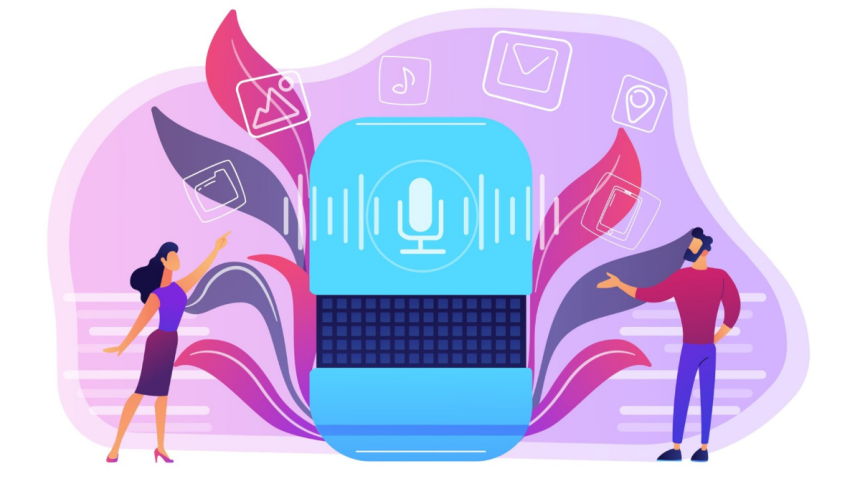In recent years, artificial intelligence (AI) development and integration have drastically reshaped various facets of technology and daily life. Among these advancements, AI voice characters stand out as a transformative force, revolutionizing how we interact with digital platforms. These intelligent, responsive, and increasingly human-like voices are not just improving user experience but are also driving significant changes across industries.
The Evolution of AI Voice Technology
The journey of AI voice technology began with simple, rule-based systems that could perform limited tasks. Early voice assistants, such as those embedded in IVR (Interactive Voice Response) systems, relied heavily on pre-programmed responses and had minimal capacity for understanding natural language or context.
With the advent of machine learning and natural language processing (NLP), AI voice technology took a giant leap forward. Systems like Apple’s Siri, launched in 2011, brought voice interaction into the mainstream, allowing users to perform various of tasks using natural language commands. This was followed by the introduction of other sophisticated voice assistants such as Google Assistant, Amazon’s Alexa, and Microsoft’s Cortana.
The Emergence of AI Voice Characters
While early voice assistants primarily focused on functional tasks, the current wave of AI voice characters is characterized by their ability to engage users in more natural, nuanced, and emotionally resonant interactions. These characters are designed to go beyond simple commands and responses, providing a more immersive and engaging user experience.
AI voice characters are powered by advanced NLP algorithms and deep learning models that enable them to understand and generate human language with remarkable accuracy. They can recognize speech, understand context, and exhibit personalities and emotional intelligence. This evolution has led to their widespread adoption in various applications, from customer service and virtual companionship to entertainment and education.
Applications of AI Voice Characters
● Customer Service
One of the most significant applications of AI voice characters is in customer service. Companies leverage these characters to enhance their customer support operations, offering round-the-clock assistance and handling a wide range of queries efficiently and empathetically. Unlike traditional chatbots, AI voice characters can engage in dynamic conversations, making customers feel heard and understood.
For example, Bank of America’s Erica and Capital One’s Eno are AI voice assistants designed to help customers manage their finances. These assistants can perform tasks such as checking balances, making payments, and providing personalized financial advice, all through conversational interactions.
● Virtual Companionship
AI voice characters are also making strides in the realm of virtual companionship. These characters can provide emotional support, companionship, and even therapeutic interactions. They are particularly beneficial for individuals who are lonely, elderly, or dealing with mental health issues.
Replika, an AI chatbot, is designed to serve as a virtual friend, engaging users in meaningful conversations and offering emotional support. It learns from interactions to better understand the user and provide more personalized and empathetic responses over time.
● Entertainment
In the entertainment industry, AI voice characters are transforming how content is created and consumed. These characters can perform as virtual actors in video games, animations, and virtual reality experiences, providing more immersive and interactive storytelling.
For instance, the video game “Cyberpunk 2077” features AI-driven characters that respond to player actions and decisions, creating a dynamic and personalized gaming experience. Similarly, AI voice actors are being used to generate dialogue for animated films and series, allowing for greater flexibility and creativity in the production process.
● Education
In education, AI voice characters are being utilized as tutors, providing personalized learning experiences and helping students with their studies. These characters can adapt to the individual learning pace and style of each student, offering explanations, answering questions, and providing encouragement.
Duolingo, a language learning platform, uses AI to power its voice characters, guiding users through language exercises and providing instant feedback on their pronunciation and grammar. This interactive approach enhances the learning experience and helps users achieve their language goals more effectively.
The Benefits of AI Voice Characters
The rise of AI voice characters offers numerous benefits, making them an attractive addition to various sectors.
● Enhanced User Experience
AI voice characters can understand and respond to natural language, making interactions more intuitive and user-friendly. They can handle complex queries, provide personalized responses, and engage users in meaningful conversations, significantly enhancing the overall user experience.
● Increased Accessibility
Voice-based interactions can make digital platforms more accessible to individuals with disabilities, such as those with visual impairments or motor disabilities. AI voice characters can read out content, navigate interfaces, and perform tasks on behalf of the user, ensuring that everyone can access and benefit from digital technologies.
● Cost Efficiency
AI voice characters offer a cost-effective solution for managing customer interactions for businesses. They can handle a large volume of queries simultaneously, reducing the need for human agents and lowering operational costs. This efficiency is particularly beneficial for large organizations that receive thousands of customer queries daily.
● Emotional Connection
Unlike traditional chatbots, AI voice characters can exhibit empathy and build emotional connections with users. They can recognise and respond to emotional cues, providing support and comfort when needed. This capability is crucial in areas such as virtual companionship and mental health support, where emotional engagement is key.
Challenges and Considerations
Despite the numerous advantages, the rise of AI voice characters also presents several challenges and considerations that need to be addressed.
● Ethical Implications
The use of AI voice characters also raises ethical considerations. For example, the potential for AI characters to manipulate emotions or behaviors raises questions about their appropriate use. Developers and companies must ensure that these characters are designed and deployed ethically, prioritizing user well-being and avoiding manipulative practices.
● Technological Limitations
While AI voice characters have made significant strides, they are not without limitations. Understanding and generating human language in all its complexity remains a challenging task. Accents, dialects, and contextual nuances can still pose difficulties, leading to misunderstandings or inaccuracies in interactions.
● Dependence on AI
As AI voice characters become more integrated into our daily lives, there is a risk of over-dependence on these technologies. This dependence could potentially diminish human-to-human interactions and lead to social isolation. Balancing the use of AI with the need for genuine human connections is crucial.
The Future of AI Voice Characters
The future of AI voice characters looks promising, with ongoing advancements in AI and NLP poised to further enhance their capabilities. Researchers are working on making these characters more emotionally intelligent,and capable of understanding and responding to a wider range of human emotions and contexts.
Additionally, the integration of AI voice characters with other emerging technologies, such as augmented reality (AR) and virtual reality (VR), will open up new possibilities for immersive and interactive experiences. Imagine virtual companions that can accompany you in a VR environment, providing real-time guidance, support, and entertainment.
Moreover, the development of multilingual AI voice characters will break down language barriers, enabling seamless communication across different languages and cultures. This will be particularly beneficial in globalized industries such as customer service, education, and entertainment.
In Conclusion,
The rise of AI voice characters transforms digital interactions, offering more natural, intuitive, and emotionally engaging experiences. From customer service and virtual companionship to entertainment and education, these characters are revolutionizing how we interact with digital platforms.
While challenges such as privacy, ethics, and technological limitations remain, the potential benefits of AI voice characters are immense. As technology continues to evolve, we can expect these characters to become even more sophisticated, capable, and integrated into our daily lives, shaping the future of digital interactions.
As we embrace the rise of AI voice characters, it is crucial to thoughtfully address the accompanying challenges, ensuring these technologies are employed responsibly and ethically. By taking this approach, we can fully harness the potential of AI voice characters to enrich our digital experiences and elevate our quality of life.
Lynn Martelli is an editor at Readability. She received her MFA in Creative Writing from Antioch University and has worked as an editor for over 10 years. Lynn has edited a wide variety of books, including fiction, non-fiction, memoirs, and more. In her free time, Lynn enjoys reading, writing, and spending time with her family and friends.















